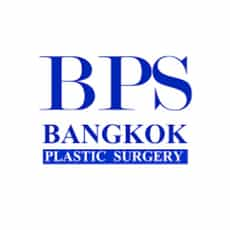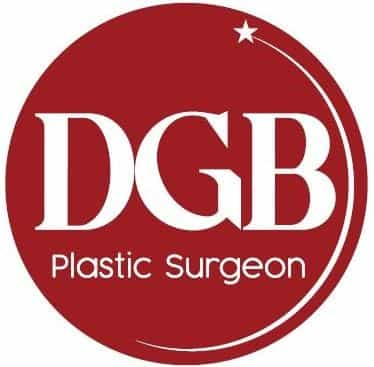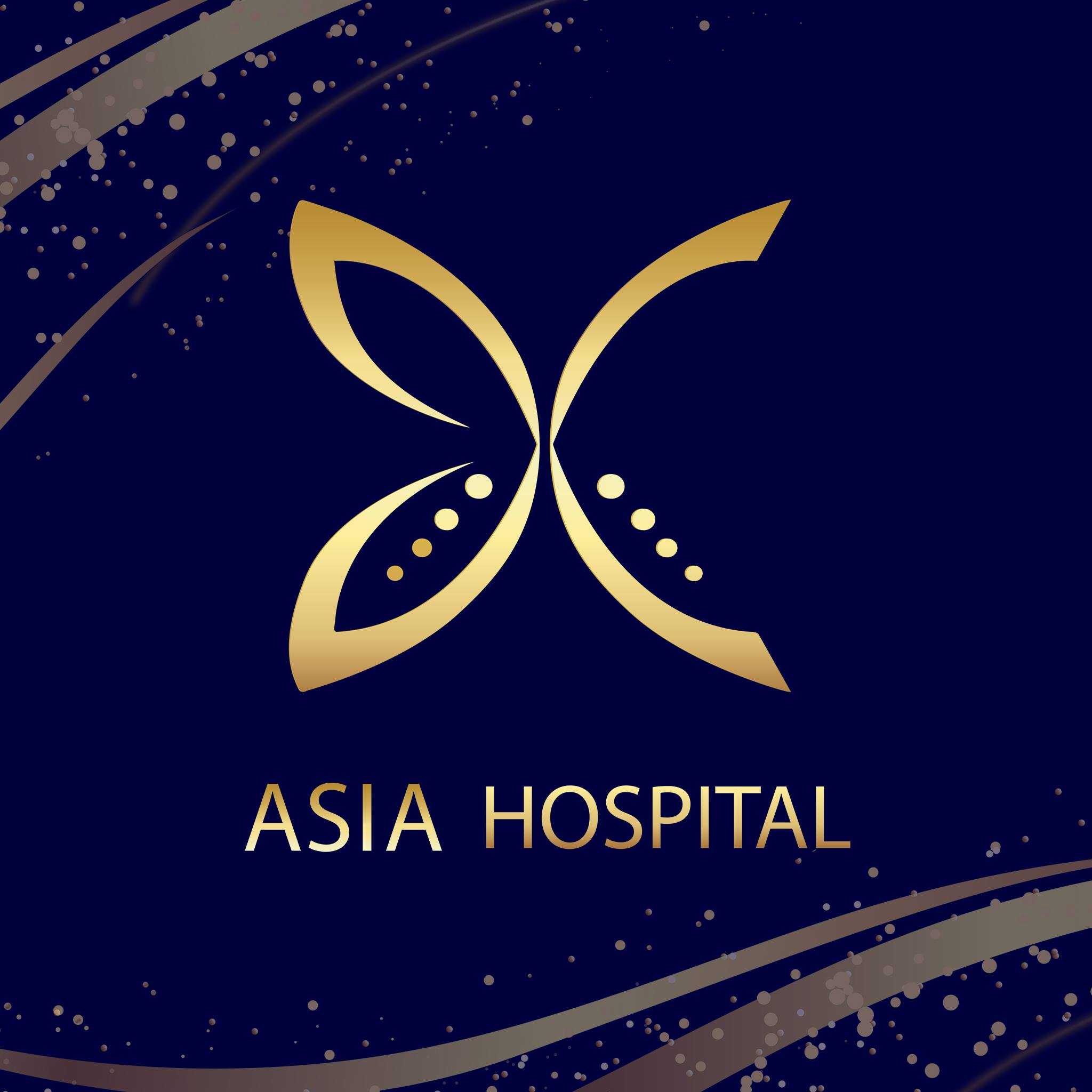Achieve a Flatter Chest: Your Guide to Gynecomastia Surgery in Thailand

Gynecomastia, the enlargement of male breast tissue, can be a source of significant self-consciousness for many men. Fortunately, gynecomastia surgery, also known as male breast reduction, offers an effective solution. Thailand has emerged as a leading destination for this procedure, drawing international patients with its combination of high-quality medical care and more affordable prices compared to Western countries. This comprehensive guide will explore everything you need to know about gyno surgery in Thailand, addressing common questions and providing detailed insights to help you make an informed decision.
How much does gynecomastia surgery cost in Thailand?
"Gynecomastia surgery in Thailand typically costs between $2,000 and $5,000 USD, though prices can range from as low as $1,400 to over $7,000 depending on the clinic, surgeon's expertise, and the complexity of the case."
Thailand is renowned for offering high-quality medical procedures at a fraction of the cost found in many Western nations, and gynecomastia surgery is no exception. While the exact price can vary significantly, the average cost for male breast reduction surgery in Thailand generally falls within the range of $2,000 to $5,000 USD. This competitive pricing includes various components such as surgeon's fees, anesthesia, hospital charges, and sometimes even pre- and post-operative care. Factors like the severity of the gynecomastia, the specific surgical techniques used (e.g., liposuction alone versus gland excision), and the reputation and location of the clinic or hospital will all influence the final price. Many clinics in popular medical tourism hubs like Bangkok and Phuket offer transparent pricing and package deals, making it easier for international patients to budget for their treatment.
What factors influence the cost of gynecomastia surgery in Thailand?
"Several factors influence the cost of gynecomastia surgery in Thailand, including the severity of the condition, the surgical technique used (liposuction, gland excision, or a combination), the surgeon's experience and reputation, the clinic or hospital's facilities and location, and whether the price includes post-operative care and accommodation."
The cost of gyno surgery in Thailand is not a one-size-fits-all figure, as several variables play a crucial role in determining the final price. The most significant factor is often the extent of the gynecomastia. Mild cases, where primarily fatty tissue needs to be removed, might only require liposuction, which is generally less invasive and less costly. More severe cases, involving significant glandular tissue growth and potentially excess skin, will require a combination of liposuction and surgical excision, leading to a higher price due to the increased complexity and longer operating time. The surgeon's experience and reputation also factor into the cost; highly sought-after plastic surgeons with extensive experience and a proven track record of successful outcomes may charge more for their services. Furthermore, the location of the clinic (e.g., in a major city like Bangkok versus a smaller town) and the standard of its facilities can impact pricing. Some all-inclusive packages offered to international patients may also cover accommodation, airport transfers, and post-operative garments, which can add to the overall cost but offer convenience.
Is gynecomastia surgery in Thailand safe?
"Yes, gynecomastia surgery in Thailand is generally safe, as many clinics and hospitals are internationally accredited and adhere to high standards of medical care, employing board-certified plastic surgeons with extensive experience in the procedure."
Thailand has invested heavily in its medical tourism sector, leading to a proliferation of modern hospitals and clinics that meet international safety and quality standards. Many facilities performing gynecomastia surgery in Thailand are accredited by reputable international organizations, such as the Joint Commission International (JCI), which signifies a commitment to rigorous patient safety protocols and quality of care. The plastic surgeons in these facilities are often highly trained, with many having received education and certification from Western countries. They possess extensive experience in various cosmetic procedures, including male breast reduction. As with any surgical procedure, there are inherent risks, but choosing a reputable clinic with a board-certified surgeon and following all pre- and post-operative instructions diligently significantly minimizes these risks. It's crucial for patients to do their research, read reviews, and ideally, have a virtual consultation to ensure they feel comfortable with their chosen medical provider.
What does the gynecomastia surgery procedure in Thailand involve?
"Gynecomastia surgery in Thailand typically involves either liposuction to remove excess fat, surgical excision to remove glandular tissue, or a combination of both techniques, depending on the individual's specific needs and the composition of the enlarged breast tissue."
The gynecomastia surgery procedure is tailored to each patient's unique anatomy and the cause of their enlarged male breasts. The most common techniques utilized in Thailand include:
- Liposuction: If the gynecomastia is primarily due to excess fatty tissue (pseudogynecomastia or lipomastia), liposuction alone may be sufficient. This involves making small incisions and using a thin tube (cannula) to suction out the fat. Vaser liposuction, which uses ultrasound energy to liquefy fat before removal, is also a popular option, allowing for more precise contouring.
- Surgical Excision: When glandular tissue is the primary cause of enlargement, or if there's excess skin, surgical excision is necessary. This involves making incisions around the areola (the dark skin around the nipple) or within the natural crease of the chest to directly remove the glandular tissue.
- Combination Technique: In many cases, a combination of both liposuction and surgical excision is used to achieve optimal results, addressing both fatty and glandular components of the gynecomastia.
The choice of technique depends on the surgeon's assessment during your consultation, taking into account the amount of excess fat and glandular tissue, skin elasticity, and the desired outcome. The procedure is typically performed under general anesthesia and usually takes a few hours.
How long is the recovery period for gynecomastia surgery?
"The initial recovery period for gynecomastia surgery usually involves 1-2 weeks of downtime, with a compression garment worn for several weeks, and most strenuous activities can be resumed after 4-6 weeks."
The recovery period after gynecomastia surgery is crucial for achieving optimal results and minimizing complications. Immediately after the procedure, patients will typically experience some swelling, bruising, and discomfort, which can be managed with pain medication. A compression garment is almost always worn for several weeks (usually 4-6 weeks) to help reduce swelling, promote skin retraction, and support the newly contoured chest. Most patients can return to light, non-strenuous activities within a few days to a week. Strenuous exercise, heavy lifting, and activities that could strain the chest muscles should be avoided for at least 4-6 weeks to allow for proper healing. The full extent of the results may not be visible for several months as swelling completely subsides. Surgeons in Thailand will provide detailed post-operative instructions, including wound care, medication schedules, and activity restrictions, to ensure a smooth and effective recovery.
What are the different types of gynecomastia and their treatment options?
"The different types of gynecomastia include true gynecomastia (glandular), pseudogynecomastia (fatty), and mixed gynecomastia, with treatment options ranging from liposuction for fatty tissue to surgical excision for glandular tissue, often combined for optimal results."
Understanding the type of gynecomastia is essential for determining the most effective treatment approach.
- True Gynecomastia (Glandular): This is characterized by the enlargement of actual glandular breast tissue in males. It's often caused by hormonal imbalances (e.g., an excess of estrogen relative to testosterone). Treatment for true gynecomastia primarily involves surgical excision to remove the firm, fibrous glandular tissue.
- Pseudogynecomastia (Fatty/Lipomastia): This refers to the appearance of enlarged male breasts due to excess localized fat deposits, without significant glandular tissue involvement. It's commonly seen in overweight or obese individuals. Treatment for pseudogynecomastia is typically liposuction, which effectively removes the fatty accumulation.
- Mixed Gynecomastia: This is the most common type, involving a combination of both excess glandular tissue and localized fat. For mixed gynecomastia, a combined approach is usually necessary, utilizing both liposuction to remove fat and surgical excision to remove the glandular component.
The precise diagnosis of the type of gynecomastia is made by a qualified plastic surgeon through physical examination and sometimes imaging studies. This diagnostic step ensures the patient receives the most appropriate and effective treatment plan.
Who is an ideal candidate for gynecomastia surgery?
"An ideal candidate for gynecomastia surgery is a male with enlarged breast tissue that has not responded to other treatments (like diet or exercise), who is in good overall physical health, has a stable weight, possesses good skin elasticity, and has realistic expectations about the outcome of the procedure."
While gynecomastia surgery can significantly improve a man's chest contour, it's not suitable for everyone. Good candidates typically meet several criteria:
- Persistent Enlargement: The breast enlargement should be bothersome and persistent, not just temporary due to puberty or medication that can be adjusted.
- Good Health: Candidates should be in good general health, without active diseases or serious medical conditions that could impair healing or increase surgical risks.
- Stable Weight: It's best for candidates to be at or near their ideal body weight. Significant weight fluctuations after surgery can affect the results.
- Good Skin Elasticity: Good skin elasticity allows the skin to retract smoothly over the newly contoured chest, minimizing the need for extensive skin removal.
- Realistic Expectations: Patients should understand the potential outcomes and limitations of the surgery and have realistic expectations about the improved appearance of their chest.
- Non-Smoker: Smoking can severely impair healing and increase complication risks, so surgeons usually advise patients to stop smoking well in advance of the surgery.
During the consultation, the surgeon will thoroughly evaluate a patient's medical history, current health, and the nature of their gynecomastia to determine if they are a suitable candidate.
What are the potential risks and complications of gynecomastia surgery?
"While generally safe, potential risks and complications of gynecomastia surgery can include bleeding, infection, adverse reaction to anesthesia, hematoma (blood collection), seroma (fluid collection), uneven chest contour, nipple asymmetry, changes in nipple sensation, and scarring."
Like any surgical procedure, gynecomastia surgery carries some potential risks and complications, although serious complications are rare, especially when performed by an experienced, board-certified surgeon in a reputable facility. Common, usually temporary, side effects include swelling, bruising, and discomfort. More significant potential complications can include:
- Bleeding and Hematoma: Bleeding can occur during or after surgery, potentially leading to a hematoma (a collection of blood under the skin) that may require drainage.
- Infection: Although sterile techniques are used, there's a small risk of infection at the incision sites.
- Adverse Reaction to Anesthesia: Some individuals may have adverse reactions to the anesthetic agents.
- Seroma: A seroma is a collection of fluid under the skin, which may also require drainage.
- Uneven Chest Contour/Asymmetry: While surgeons strive for symmetry, slight irregularities or asymmetry can occur.
- Nipple Asymmetry or Changes in Sensation: The nipples may appear slightly uneven, or there might be temporary or permanent changes in nipple sensation, including numbness or hypersensitivity.
- Scarring: All surgical procedures result in scars. While surgeons aim to place incisions discreetly, visible scars are an inherent risk. The extent and visibility of scars depend on the surgical technique used and individual healing characteristics.
It's crucial to discuss these risks thoroughly with your surgeon before the procedure and to follow all pre- and post-operative instructions carefully to minimize their likelihood.
What results can I expect from gynecomastia surgery in Thailand?
"You can expect a flatter, more masculine chest contour following gynecomastia surgery in Thailand, with a significant reduction in breast size and improved overall body confidence, though final results may take several months to fully appear as swelling subsides."
The primary goal of gynecomastia surgery is to create a more defined and masculine chest appearance. Patients can anticipate a significant reduction in the size and prominence of their breast tissue, leading to a flatter and firmer chest contour. The results are generally long-lasting, especially if the patient maintains a stable weight and no new hormonal imbalances occur. While immediate improvements will be visible, the final results will gradually become apparent as post-operative swelling resolves, which can take several months. The improvements often extend beyond the physical, boosting self-confidence and improving comfort in clothing. Surgeons in Thailand are highly skilled in achieving natural-looking results, ensuring that the new chest contour is proportionate to the rest of the body.
How do I choose the right clinic and surgeon for gynecomastia surgery in Thailand?
"Choosing the right clinic and surgeon for gynecomastia surgery in Thailand involves thoroughly researching the surgeon's qualifications and experience, ensuring the clinic is internationally accredited, reviewing patient testimonials and before-and-after photos, considering transparent pricing, and having a virtual consultation to assess communication and comfort levels."
Selecting the best medical provider for your gyno surgery in Thailand is paramount for a safe and successful outcome. Here are key considerations:
- Surgeon's Qualifications and Experience: Look for plastic surgeons who are board-certified and have extensive experience specifically in gynecomastia surgery. Inquire about their training, the number of procedures they have performed, and their specialization.
- Clinic Accreditation and Facilities: Opt for clinics or hospitals that are internationally accredited (e.g., JCI accreditation) and have modern, well-equipped facilities. This indicates adherence to high standards of patient safety and care.
- Patient Testimonials and Reviews: Read reviews from previous patients, particularly those who have undergone gynecomastia surgery. Look for consistent positive feedback regarding results, patient care, and post-operative support.
- Before-and-After Photos: A reputable surgeon will be able to show you a portfolio of their previous gynecomastia surgery cases. This allows you to assess their aesthetic style and the quality of their work.
- Transparent Pricing: Ensure the clinic provides a clear and comprehensive breakdown of all costs involved, with no hidden fees. Understand what is included in the package (e.g., anesthesia, hospital stay, post-op garments).
- Communication and Comfort: Schedule a virtual consultation to discuss your concerns, ask questions, and gauge your comfort level with the surgeon and their team. Effective communication is vital, especially when undergoing surgery abroad.
- Post-Operative Care: Confirm the extent of post-operative care provided, including follow-up appointments and accessibility for any concerns once you return home.
By carefully considering these factors, you can make an informed decision and choose a trusted provider for your gynecomastia surgery in Thailand.
What pre-operative preparations are required for gynecomastia surgery?
"Pre-operative preparations for gynecomastia surgery typically involve a thorough medical evaluation to ensure overall health, blood tests and possibly imaging, discontinuing certain medications and supplements, and quitting smoking well in advance of the procedure."
Proper preparation before gynecomastia surgery is crucial for ensuring a safe procedure and optimal results. Your surgeon and their team in Thailand will provide specific instructions, but generally, these preparations include:
- Medical Evaluation: A comprehensive medical history review and physical examination will be conducted to assess your general health and identify any underlying conditions.
- Blood Tests and Imaging: You will likely undergo various blood tests. In some cases, imaging studies like mammograms or ultrasounds may be recommended to differentiate between glandular tissue and fat, or to rule out other medical conditions.
- Medication Review: You'll need to inform your surgeon about all medications, supplements, and herbal remedies you are taking. You may be advised to stop certain medications, especially blood thinners like aspirin or ibuprofen, several weeks before surgery to minimize bleeding risks.
- Quit Smoking: If you smoke, you will be strongly advised to quit several weeks or even months before the surgery, as smoking significantly impairs healing and increases the risk of complications.
- Avoid Alcohol: Limit or avoid alcohol consumption for at least a week before surgery.
- Arrange for Support: Plan for someone to accompany you to and from the clinic on the day of surgery and assist you during the initial recovery period.
- Fasting: You will be instructed to fast for a certain number of hours before the surgery.
Adhering to these pre-operative guidelines diligently will contribute to a smoother surgical experience and a more successful outcome.
What are the long-term outcomes and maintenance after gynecomastia surgery?
"The long-term outcomes of gynecomastia surgery are generally excellent and permanent, provided the patient maintains a stable weight and does not experience new hormonal imbalances, with minimal maintenance required beyond a healthy lifestyle."
Once the excess glandular tissue and fat are removed during gynecomastia surgery, they typically do not return, making the results permanent. However, it's important to understand that new weight gain can lead to the accumulation of fat in the chest area, potentially creating a similar appearance to pseudogynecomastia. Therefore, maintaining a stable and healthy weight through a balanced diet and regular exercise is crucial for preserving the long-term results of the surgery. Similarly, new hormonal imbalances, though rare, could theoretically lead to a recurrence of glandular tissue growth. Regular follow-up appointments with your surgeon, particularly in the initial post-operative period, are important to monitor healing and address any concerns. Beyond that, the maintenance is simply a commitment to a healthy lifestyle to enjoy your new, improved chest contour for years to come.
Is gynecomastia surgery covered by insurance?
"Gynecomastia surgery is typically considered a cosmetic procedure and is therefore rarely covered by health insurance unless there are clear medical reasons for the surgery, such as significant pain, functional impairment, or psychological distress documented by a medical professional."
In most cases, gynecomastia surgery is viewed as an elective cosmetic procedure aimed at improving aesthetic appearance rather than addressing a life-threatening medical condition. As such, health insurance providers, both in Thailand and internationally, rarely cover the costs. However, there are exceptions. If the gynecomastia causes significant physical discomfort (e.g., severe pain, nipple sensitivity, skin irritation), or if it leads to documented psychological distress (e.g., severe anxiety, depression, social avoidance) that impacts a patient's daily life, some insurance companies might consider covering a portion of the cost. To qualify for potential coverage, patients usually need a letter of medical necessity from their primary care physician or an endocrinologist, along with supporting documentation from a plastic surgeon detailing the medical rationale for the procedure. It's always advisable to contact your insurance provider directly to understand their specific policies regarding gynecomastia surgery and any requirements for coverage.
What are the alternatives to gynecomastia surgery?
"Alternatives to gynecomastia surgery primarily include lifestyle modifications such as diet and exercise to reduce fat, and medication to address hormonal imbalances, though these are often only effective for pseudogynecomastia or mild cases of true gynecomastia."
For men considering gynecomastia surgery, it's important to understand that not all cases require surgical intervention. Depending on the underlying cause and severity, several alternatives may be explored:
- Lifestyle Modifications: For pseudogynecomastia (enlargement primarily due to fat), weight loss through diet and exercise can significantly reduce the appearance of enlarged breasts. Building chest muscle can also help improve chest contour. However, these methods are ineffective for true gynecomastia involving glandular tissue.
- Medication: If gynecomastia is caused by specific hormonal imbalances or medications, addressing the underlying cause may help. For instance, discontinuing or changing certain medications that cause breast enlargement as a side effect can sometimes resolve the issue. In cases of significant hormonal imbalance, your doctor might prescribe medications like tamoxifen or raloxifene, which can help reduce glandular tissue in some individuals, though these are often used off-label and with varying success rates.
- Addressing Underlying Medical Conditions: Sometimes, gynecomastia can be a symptom of an underlying medical condition (e.g., liver disease, kidney failure, thyroid dysfunction). Treating these conditions may lead to a reduction in breast size.
It's crucial to consult with a doctor to determine the exact cause of your gynecomastia and explore non-surgical options before considering surgery. However, for established and bothersome true gynecomastia or mixed cases, surgery often remains the most effective and definitive solution.
How does gynecomastia surgery in Thailand compare to other countries in terms of cost and quality?
"Gynecomastia surgery in Thailand offers a highly competitive option in terms of cost-effectiveness without compromising on quality, often being significantly more affordable than in Western countries like the US, UK, or Australia, while maintaining high standards of medical care and experienced surgeons."
Thailand has gained a strong reputation as a global medical tourism hub, and for good reason. When comparing gynecomastia surgery costs and quality, Thailand often stands out:
- Cost-Effectiveness: The most significant advantage is the price. Gynecomastia surgery in Thailand can be anywhere from 50% to 80% less expensive than in countries such as the United States, Canada, the UK, or Australia. This cost difference is primarily due to lower overheads, medical malpractice insurance costs, and competitive market pricing, not necessarily a compromise in quality.
- Quality of Care: Many Thai hospitals and clinics adhere to international standards, with a significant number being internationally accredited (e.g., JCI). They boast state-of-the-art equipment, modern facilities, and highly trained medical staff, including plastic surgeons who often have international education and experience. The level of patient care, including personalized attention and hospitality, is also frequently praised by international patients.
- Accessibility and Experience: Thailand's established medical tourism infrastructure means easier access to comprehensive services, including medical coordinators, translation services, and assistance with travel arrangements. Thai surgeons have extensive experience with international patients, understanding their needs and expectations.
While cost is a major draw, the consistent delivery of high-quality results and patient-centric care is what truly sets Thailand apart as a preferred destination for gynecomastia surgery.
We invite you to explore PlacidWay for solutions related to medical tourism, healthcare services, or other relevant offerings, and to find the right path for your health and wellness journey.


.png)














Share this listing